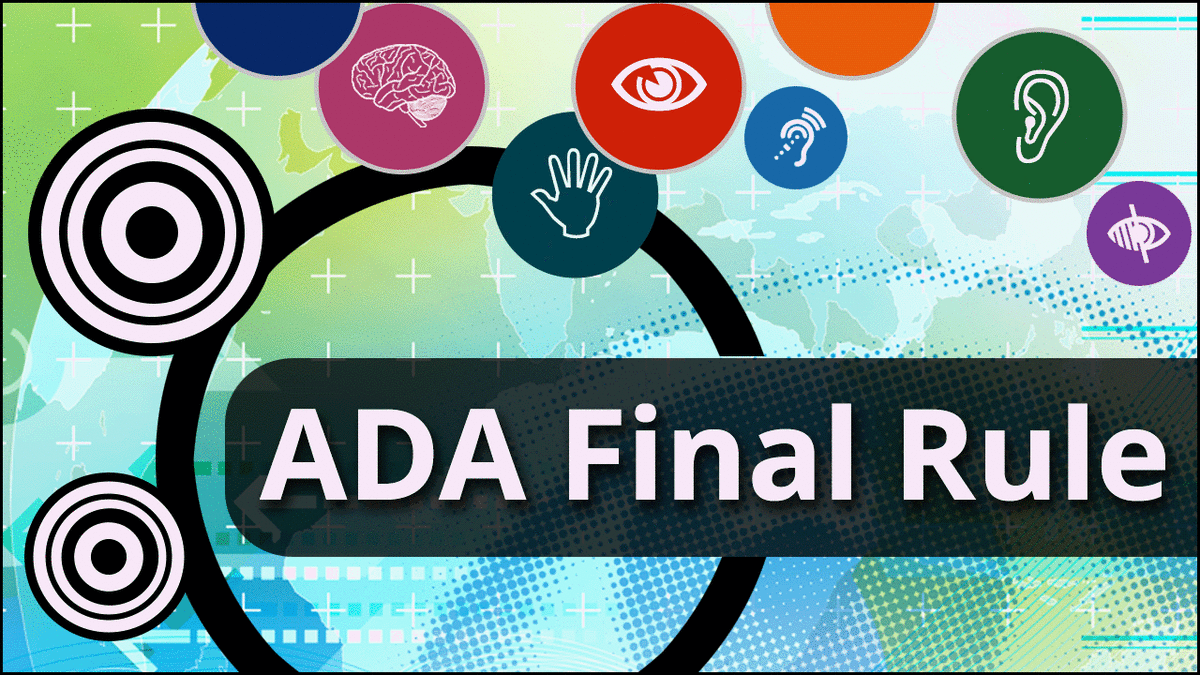On April 8, 2024, the U.S. Department of Justice (DOJ) announced a Final Rule (PDF) under Title II of the Americans with Disabilities Act (ADA).
Who Does it Apply to?
The rule applies to U.S. organizations that are covered under Title II of the ADA. This includes public schools, colleges, and universities, such as the University of Minnesota.
What Does It Say?
The rule states in most cases, web content and mobile apps must conform to W3C Web Content Accessibility Guidelines (WCAG) 2.1 at Level AA. It is the baseline or floor to comply with the new rule. The rule has some exceptions but is fairly strict. Note: WCAG 2.1 AA has served as the University of Minnesota accessibility standard since 2018.
Organizations can use alternatives to WCAG 2.1 AA (such as WCAG 2.2 or future versions of WCAG) if they have the same or "equivalent facilitation" or better accessibility.
Why Was the New Rule Made?
Since 1996, the DOJ has publicly acknowledged that websites must be accessible to people with disabilities. This new rule sets no new obligations. It was made to clarify how to measure compliance.
The rule will help reduce barriers for people with disabilities. As Attorney General Merrick Garland said in the DOJ's press release:
By issuing clear and consistent accessibility standards for state and local governments' digital content, this rule advances the ADA's promise of equal participation in society for people with disabilities.
When Does It Take Effect?
The rule is effective as soon as it is published in the Federal Register (soon).
After publication organizations have either 2 years (or 3 for small organizations) to make sure that their web content and mobile apps conform to WCAG 2.1 AA.
Resources
- 1996 Letter from Deval L. Patrick, Assistant Attorney General to Senator Tom Harkin
- Fact Sheet - U.S. Department of Justice
- Eight Key Takeaways From the DOJ's New Web and Mobile Accessibility Rule for Public Entities - Jessie Weber
- The ADA Now Has Regulations for Accessibility of Web Content and Mobile Apps - David Sloan
- U.S. Department of Justice Accessibility Rule Announcement for State and Local Governments - Thomas Logan
- ADA Title II Updates: What to Know about the DOJ's New Rule - Jon Avila
- DOJ Issues FINAL Title II Web Accessibility Rule - Ken Nakata
- Policy on Accessibility of Information Technology - University of Minnesota
Update April 24, 2024
It's official. The ADA rule was published April 24, 2024 in the Federal Register:
- Nondiscrimination on the Basis of Disability; Accessibility of Web Information and Services of State and Local Government Entities - U.S. Department of Justice
- Nondiscrimination on the Basis of Disability; Accessibility of Web Information and Services of State and Local Government Entities- Final rule- Civil Rights Division, DOJ (PDF) - U.S. Department of Justice
